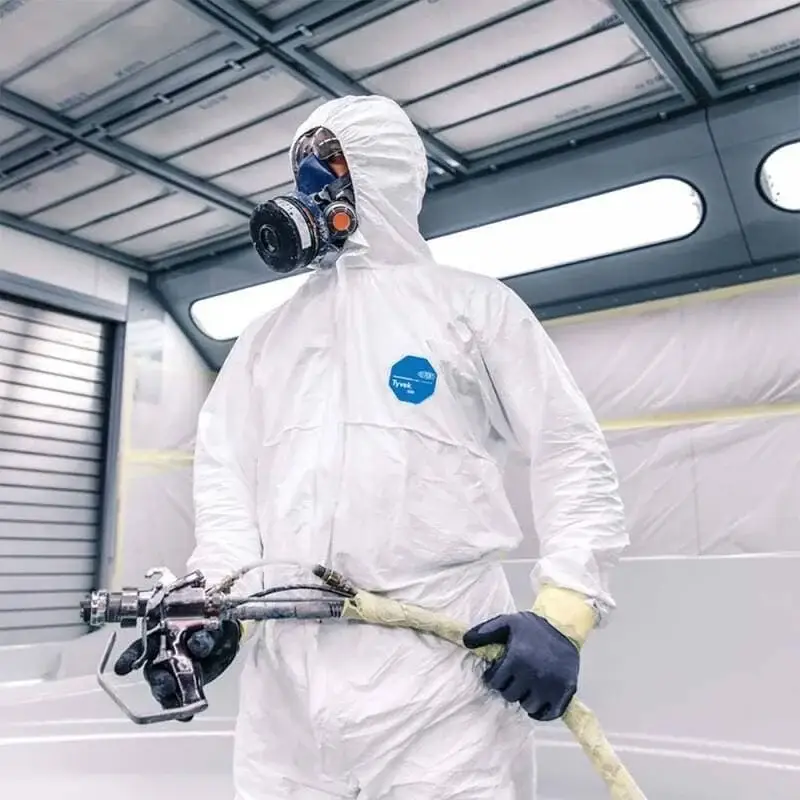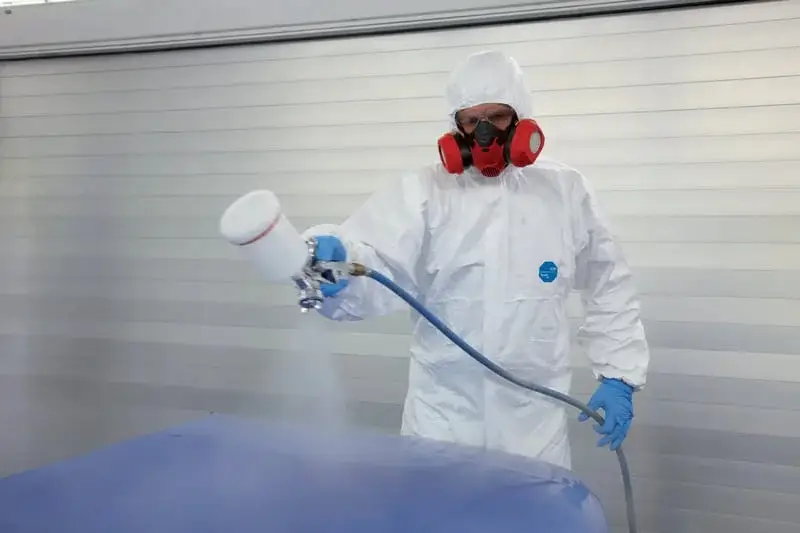Table of Contents
Sterile Areas of Surgical Gown are critical zones designed to maintain aseptic conditions during surgical procedures. These areas, typically including the front of the gown from chest to sterile field level and sleeves from above the elbow to the cuff, are essential in minimizing infection risks. The back of the gown, however, is considered non-sterile and should not come into contact with sterile fields.
Understanding and adhering to these sterile areas of surgical gown can significantly impact surgical outcomes. A study investigated the sterility of surgical gowns during lower limb joint replacement surgeries. It found that despite preoperative sterilization and adherence to guidelines, contamination occurred during surgery, particularly in areas near the neckline and below the operating table. This highlights the importance of identifying and maintaining sterile zones on surgical gowns to minimize infection risks. (PMCID: PMC6686066)
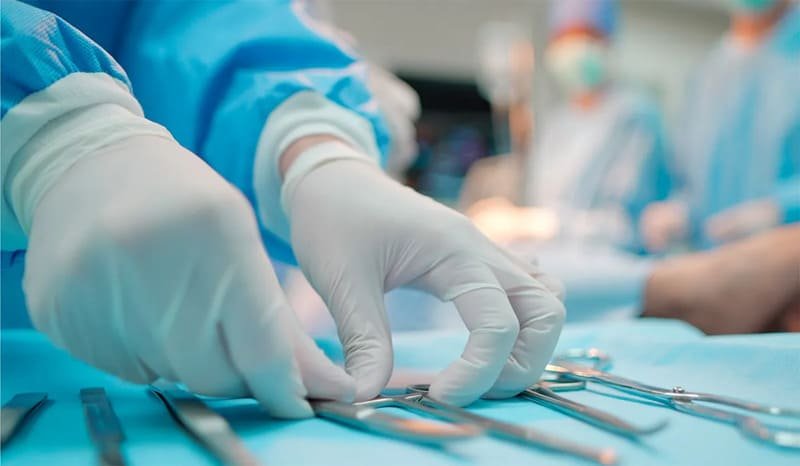
Critical Sterile Zones: Sterile Areas of Surgical Gown
The sterile areas of a surgical gown are specifically designed to minimize the risk of contamination during surgical procedures. These areas are defined based on their likelihood of coming into contact with sterile fields and instruments, making it critical to maintain their sterility.
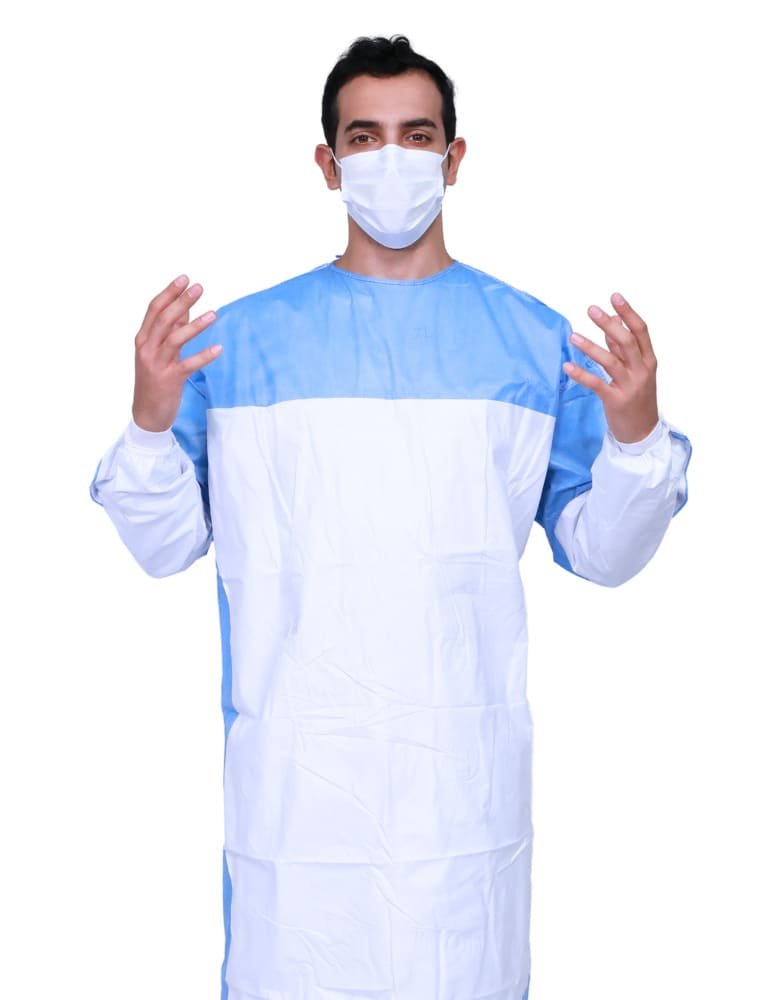
The front of the gown, from the chest to the level of the sterile field (usually the operating table), is considered sterile. This area is most likely to come into contact with the surgical site and instruments, making it critical to maintain its sterility. (PMCID: PMC2635444)

Sleeves of sterile surgical gowns
The sleeves are sterile from two inches above the elbow to the cuff. This crucial detail ensures that the parts of the gown most likely to come into contact with the sterile field remain uncontaminated. (FDA)
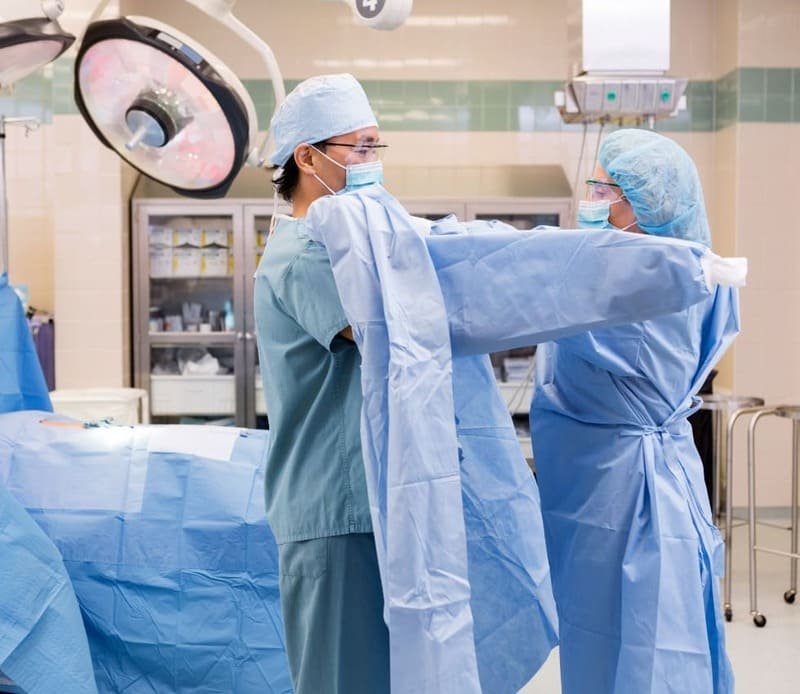
Non-sterile Zones of a Surgical Gown sterile
The “Sterile Areas Of Surgical Gown” encompasses the front from the waist up and the sleeves, while areas like the neckline, back, and underarms are non-sterile, emphasizing the critical need for healthcare professionals to understand and adhere to these distinctions to minimize contamination risk and ensure patient safety during surgical procedures.
Back of the sterile gown
When considering the sterile areas of a surgical gown, it’s crucial to note that the entire back of the gown is classified as non-sterile. Why is that? Simply put, the back is out of the surgeon’s field of view, making it more prone to accidental contact with non-sterile surfaces. This increases the risk of contamination, which is why surgical protocols strictly maintain that only the front of the gown, from the chest to the sterile field, remains sterile.
Axillary Region of the sterile gown
The axillary (underarm) region is also non-sterile. This area is prone to perspiration, which can compromise the gown’s barrier properties.(ast.org)
Contamination Risks in Sterile Surgical Gowns
A study investigated the sterility of surgical gowns during total joint arthroplasties. It found that contamination rates varied significantly across different parts of the gown. The anterior surface of the gown, particularly near the neckline and below the operating table, showed higher contamination rates. Specifically, the contamination rate was 35.9% in the distal part, 8.9% in the middle part, and 47.3% in the proximal part of the gown. Additionally, the contamination rate at the elbow crease was 23%, and at 5 and 10 cm above the creases, it was 24% and 36%, respectively.
Neckline and Upper Chest
The neckline and upper chest of surgical gowns are highly susceptible to contamination due to:
- Proximity to non-sterile areas like the face and mask
- Exposure to respiratory droplets from speaking or breathing
- Closeness to exposed skin and its natural flora
- Sweat accumulation, which can compromise the gown’s barrier
- Constant movement causes friction and potential gown integrity issues
These factors collectively increase the risk of bacterial transfer and growth in these critical areas during surgical procedures.
Lower Gown Below the Operating Table
The lower portion of the surgical gown, especially below the operating table, is at high risk for contamination due to:
- Contact with non-sterile surfaces (surgeon’s legs, table, equipment)
- Splash and spatter of fluids during procedures
- Air currents carrying dust or particles
- Reduced attention compared to the main surgical area
- Accumulation of contaminants over time due to gravity
The area below the operating table is also more likely to become contaminated due to contact with non-sterile surfaces and objects.
Guidelines and Recommendations
The following guidelines are recommended to ensure the sterility of surgical gowns.
Selecting the appropriate level of sterile surgical gown is critical for maintaining aseptic conditions during procedures. Gowns are classified from Level 1 to Level 4, based on their protective capabilities. Level 1 gowns offer minimal protection for low-risk, short procedures with little fluid exposure. In contrast, Level 4 gowns provide a maximum barrier against fluid and microbial penetration, ideal for long, fluid-intensive high-risk surgeries. The Association of Perioperative Registered Nurses (AORN) reports that using the correct gown level can significantly reduce surgical site infections. Healthcare professionals must assess the procedure’s risk, duration, and anticipated fluid exposure to choose the most suitable gown level, ensuring optimal protection for both the patient and the surgical team.
One of the most critical steps in maintaining sterile areas of surgical gowns is the proper donning and doffing of the attire. Improper techniques can lead to contamination, nullifying the gown’s protective barrier. Always follow a step-by-step procedure: sanitize hands, ensure the gown is donned without touching the outer surface, and secure it properly. For doffing, avoid contact with the exterior and follow a meticulous process to discard the gown safely. The Centers for Disease Control and Prevention (CDC) emphasizes that proper technique can prevent contamination in up to 85% of cases.
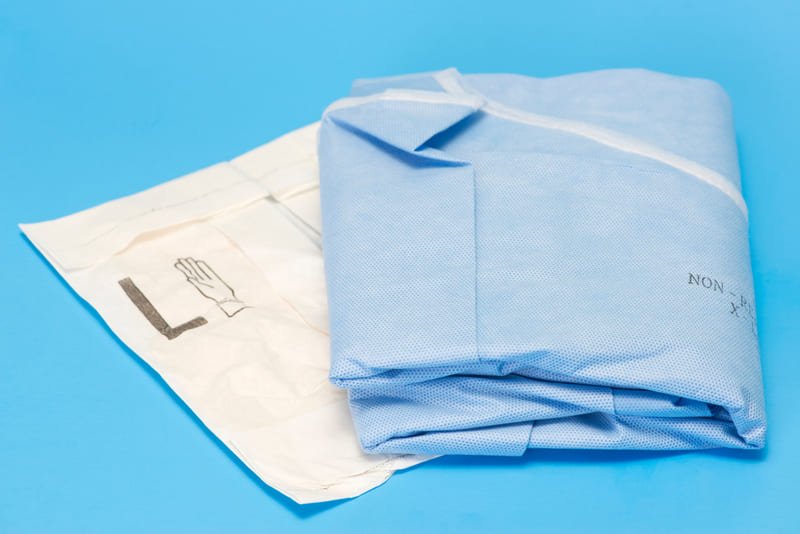
Material Selection
The choice of material is paramount in ensuring the sterile areas of surgical gowns remain uncontaminated. Impermeable, fluid-resistant materials such as polyethylene or polypropylene are preferred. These materials prevent strike-through contamination, which occurs when fluids penetrate the gown, carrying pathogens with them. According to a study in the Journal of Hospital Infection, gowns made from these materials reduce the risk of bacterial transmission by 40%. (PubMed, PMCID: PMC4791533, PMCID: PMC4900177)
Regular Monitoring and Aseptic Techniques
Maintaining the sterile field requires continuous vigilance and adherence to aseptic techniques. Regular monitoring during procedures is essential to ensure the gown’s sterile areas remain uncompromised. This includes frequent checks and immediate action if a breach is detected. The World Health Organization (WHO) guidelines suggest that rigorous adherence to aseptic techniques can maintain a sterile field in 98% of surgeries. (ast.org, aorn.og )
By following these guidelines, healthcare professionals can significantly enhance the sterility of surgical gowns, ensuring a safer environment for both patients and medical staff.
In conclusion, understanding and respecting the sterile areas of surgical gowns is crucial for infection control in operating rooms. The critical sterile areas of the surgical gown – the surgical gown’s front from the chest to the sterile field and sleeves from above the elbow to the cuff – are vital in preventing contamination. Research shows that adhering to these zones can significantly reduce surgical site infections.
Proper use of surgical gowns, with strict attention to sterile and non-sterile areas, is fundamental to patient safety and successful surgical outcomes. Healthcare professionals must remain vigilant in maintaining these sterile barriers throughout procedures.
Ready to enhance your surgical safety protocols? Contact Morntrip today for expert guidance on surgical gown selection and use, or to place an order for high-quality, sterile surgical gowns tailored to your specific needs. Let’s work together to ensure the highest standard of infection control.

